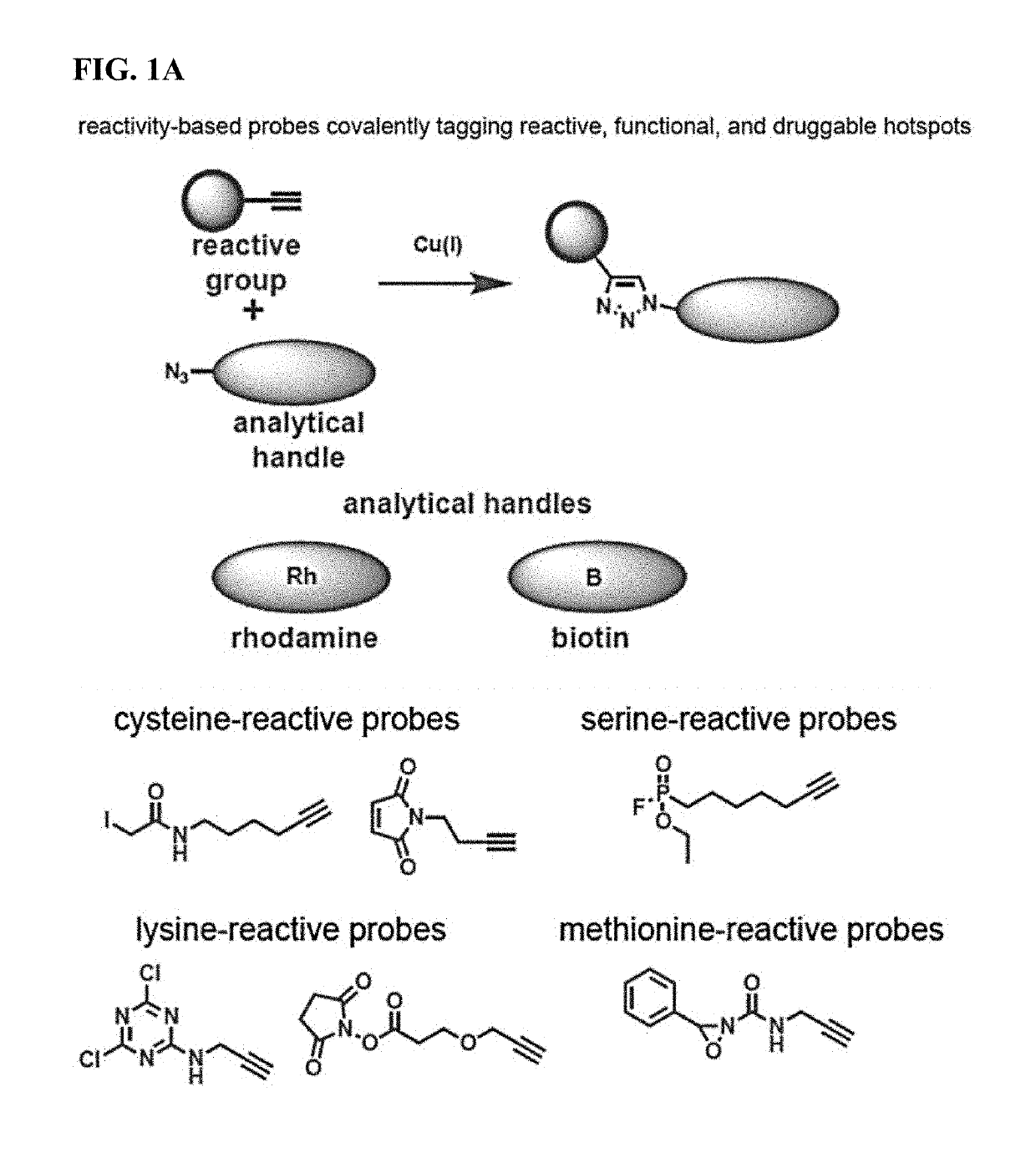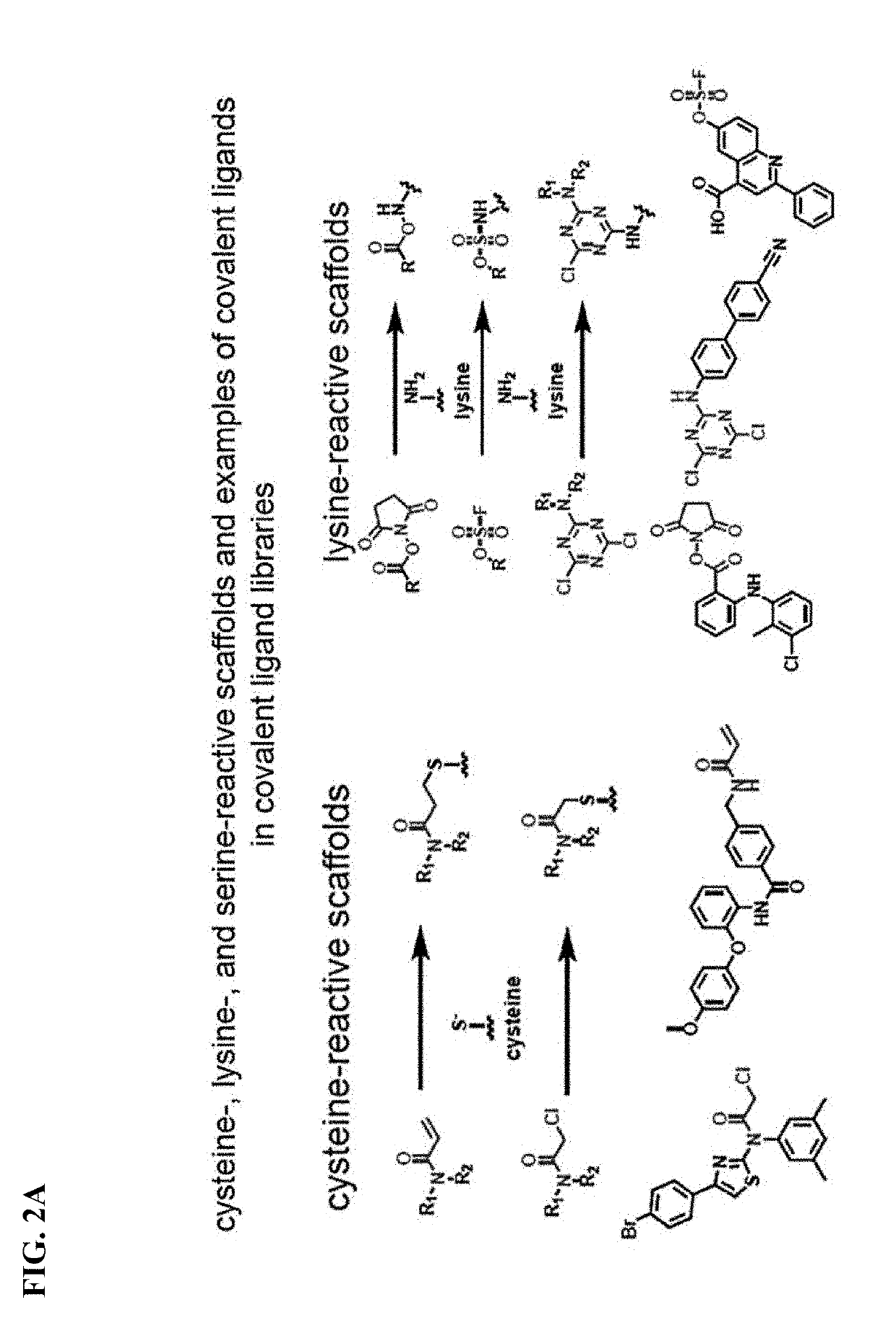Methods and compounds for targeted autophagy
a technology of autophagy and methods, applied in the direction of drug compositions, immunological disorders, metabolism disorders, etc., can solve the problem that the therapeutic targets have remained largely untranslated
- Summary
- Abstract
- Description
- Claims
- Application Information
AI Technical Summary
Benefits of technology
Problems solved by technology
Method used
Image
Examples
example 1
[1171]We disclose here a platform for Targeted Protein Autophagy (TPA) of specific proteins, protein aggregates or misfolded proteins, organelles, cellular compartments, or microorganisms in cells for drug discovery applications. TPA uses bifunctional small-molecule degraders that consist of one end that targets a protein of interest, a linker, and another end that recruits an autophagy adaptor protein (e.g., LC3, p62, NBR1, NDP52, Optineurin, or any other protein adaptor involved in autophagy) to engulf the protein cargo into an autophagosome for lysosomal degradation. This strategy can be applied for therapeutically degrading any specific protein target, protein complex, or aggregated or misfolded proteins within the cell. Furthermore, we can potentially also use this platform for targeting and lysosomally degrading organelles, such as mitochondria, lipid droplets, endoplasmic reticulum) and ribosomes through mitophagy, lipophagy, ERophagy or ribophagy, respective...
example 2
Autophagy Degrader Technology (TADT)
[1188]We have performed a cysteine-reactive covalent ligand screen against the autophagy adapter protein SQSTM1 (p62) using gel-based activity-based protein profiling (ABPP) approaches. We have identified several hit compounds that targeted a cysteine on SQSTM1 (FIGS. 10A-10B). Among these hits, we found that EN96 was the most potent covalent ligand against SQSTM1. To test whether we can use this potential SQSTM1 recruiter EN96 in a TADT platform, we synthesized BMF-1-64, which links EN96 to a BRD4 inhibitor JQ1, to determine whether we could degrade BRD4 in a proteasome-independent manner (FIG. 11). We confirm that BMF-1-64 still interacts with SQSTM1 and shows even better potency against SQSTM1 with an IC50 of 0.42 microM (FIG. 12). We show that treatment of U2OS cells with BMF-1-64 leads to the degradation of BRD4 and that this treatment is not prevented with pre-treatment of these cells with a proteasome inhibitor bortezomib (BTZ) (FIG. 13). W...
example 3
n T-derivative linked to EN96 p62 / SQSTM1 ligand
[1190]To determine whether the targeted autophagy degradation technology (TADT) could also be used to degrade protein aggregates, we synthesized a degrader BMF-1-141 linking the p62 / SQSTM1 recruiter EN96 to a thioflavin T derivative that recognizes protein aggregates such as amyloid and polyQ-Huntingtin (HTT) (FIG. 15). We then treated this degrader in a U2OS cell line model in which we could induce the expression of HTT fused to a polyQ-HTT protein, which leads to the generation of HTT protein aggregates (Bersuker et al 2016). We show significant reduction in polyQ-HTT protein levels from treatment of these cells with BMF-1-141 (FIG. 16). These results show potential proof-of-concept that the TADT technology could be used to degrade protein aggregates.
[1191]BMF-1-141: 1H NMR (400 MHz, CDCl3) δ 7.96 (d, J=16.7 Hz, 2H), 7.94 (d, J=8.7 Hz, 1H), 7.30 (d, J=7.7 Hz, 1H), 7.23 (d, J=7.7 Hz, 1H), 7.05 (dd, J=8.9, 2.5 Hz, 1H), 6.88 (t, J=7.4 Hz...
PUM
| Property | Measurement | Unit |
|---|---|---|
| covalent | aaaaa | aaaaa |
| electrophilic | aaaaa | aaaaa |
| mass spectroscopic detection | aaaaa | aaaaa |
Abstract
Description
Claims
Application Information
 Login to View More
Login to View More - R&D
- Intellectual Property
- Life Sciences
- Materials
- Tech Scout
- Unparalleled Data Quality
- Higher Quality Content
- 60% Fewer Hallucinations
Browse by: Latest US Patents, China's latest patents, Technical Efficacy Thesaurus, Application Domain, Technology Topic, Popular Technical Reports.
© 2025 PatSnap. All rights reserved.Legal|Privacy policy|Modern Slavery Act Transparency Statement|Sitemap|About US| Contact US: help@patsnap.com



